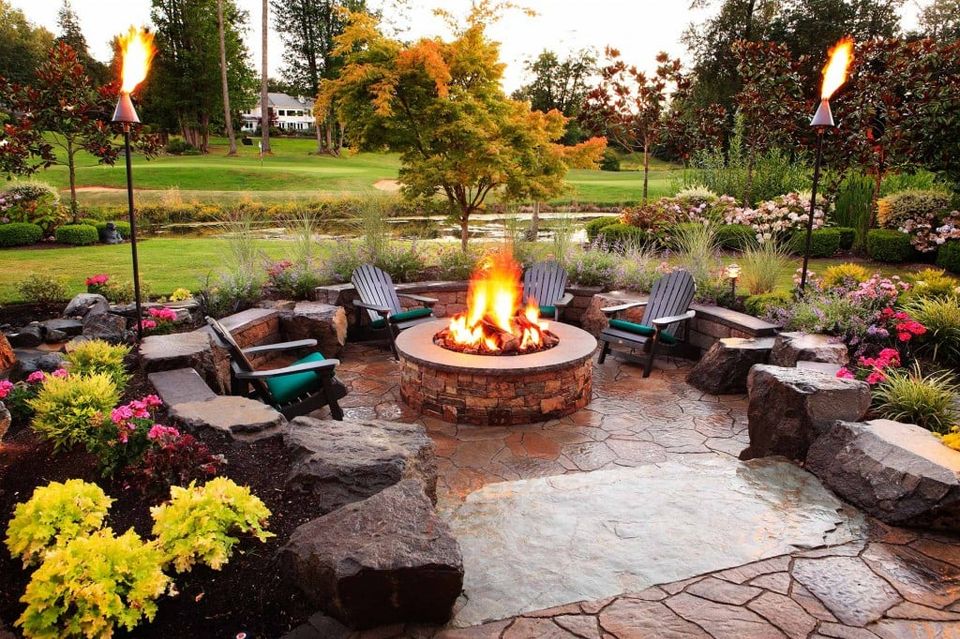Symmetry and Asymmetry Design for Landscapes
CREATE A BEAUTIFUL OUTDOOR SPACE WITH SYMMETRY AND ASYMMETRY
A recent poll for the National Association of Landscape Professionals discovered that 67% of Americans believe hiring professional landscaping would allow them to have a nicer yard. However, hiring professionals still means that the homeowner has to make important decisions regarding their landscape’s final look. One decision landowners and landscapers alike have to make is whether to focus on symmetrical or asymmetrical landscape design.
Both symmetrical and asymmetrical elements can create a beautiful outdoor space. By drawing the viewer’s eye intentionally from element to element, both styles employ the careful use of lines and shapes to make a gorgeous finished landscape. But what are the differences between these two approaches?

SYMMETRICAL DESIGN: CLASSIC, FORMAL, ELEGANT
Symmetrical landscape construction adds balance and uniformity to any outdoor area. Symmetry adds a sense of formality, stability, intentionality, and order to a space. Using symmetry is particularly popular for front yards to add curb appeal for a welcoming entrance.
Many landscape designers use symmetrical shapes and lines to create mirror-image designs on either side of a central feature, like a front door. In addition, these design ideas are often easier to construct since they are essentially repeated patterns.
However, symmetrical designs aren’t ideal in every situation. Some properties are not symmetrical in shape, which makes creating the perfect balance in outdoor design elements challenging. Similarly, this style requires plants to be trimmed to perfectly equal sizes and shapes, which is difficult and time-consuming. Homeowners that choose symmetrical designs usually hire landscape maintenance companies for perfect results.

ASYMMETRICAL DESIGN: ORGANIC, FREE-FLOWING, UNIQUE
Asymmetrical landscapes have their own charm. By following less rigid designs, asymmetrical landscapes look more relaxed and organic. Due to its flexibility, asymmetry is often seen in backyards, natural gardens, and entertaining areas. While the lines in these landscapes are more curving and free-flowing, artistic unity is usually created by using repeated patterns and shapes. Also, an array of colors, sizes, and textures in plants are often used to create a sense of intentional spontaneity.
Many homeowners love asymmetrical gardens because they can be a little overgrown without looking unbalanced. Additionally, these landscapes are often easier to expand and change. One thing to note, however, is that it is often more difficult to design these landscapes well without them appearing disorganized. This is why, for more complicated yards, homeowners often hire professional landscape designers.
When designing your yard, it can be tempting to dive right into a project after a few planning attempts and some loose sketches. Although getting your hands dirty is fun, we recommend investing time and money into the planning stages for best results. Whether you choose symmetry or asymmetry for your landscape design, both can result in gorgeous landscapes for you to enjoy.
Want to see what the experts have to say?